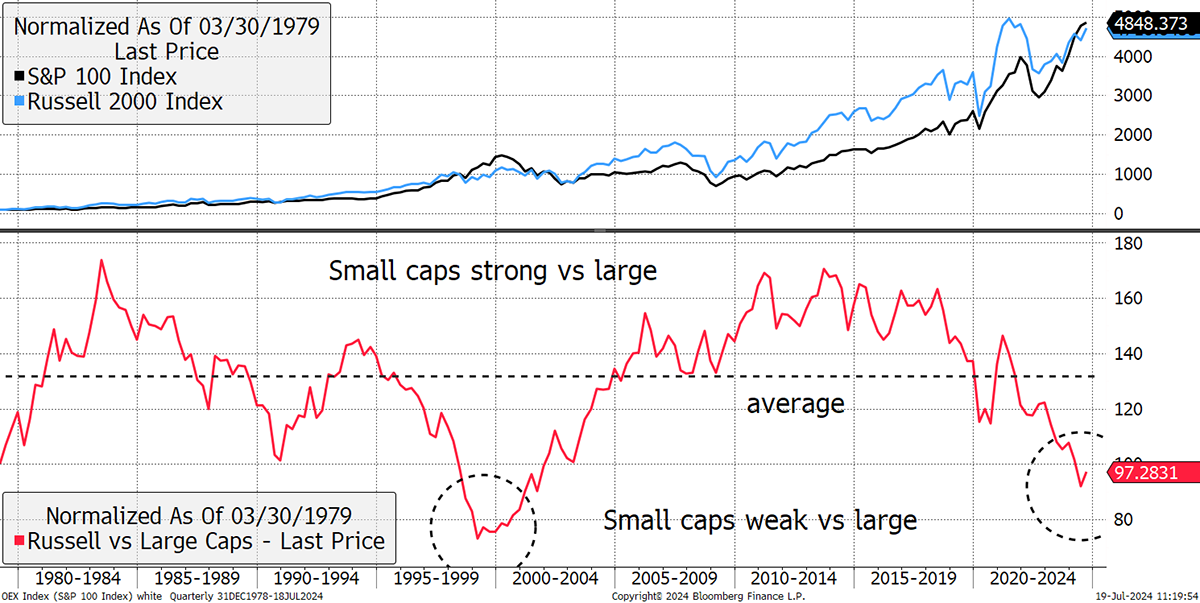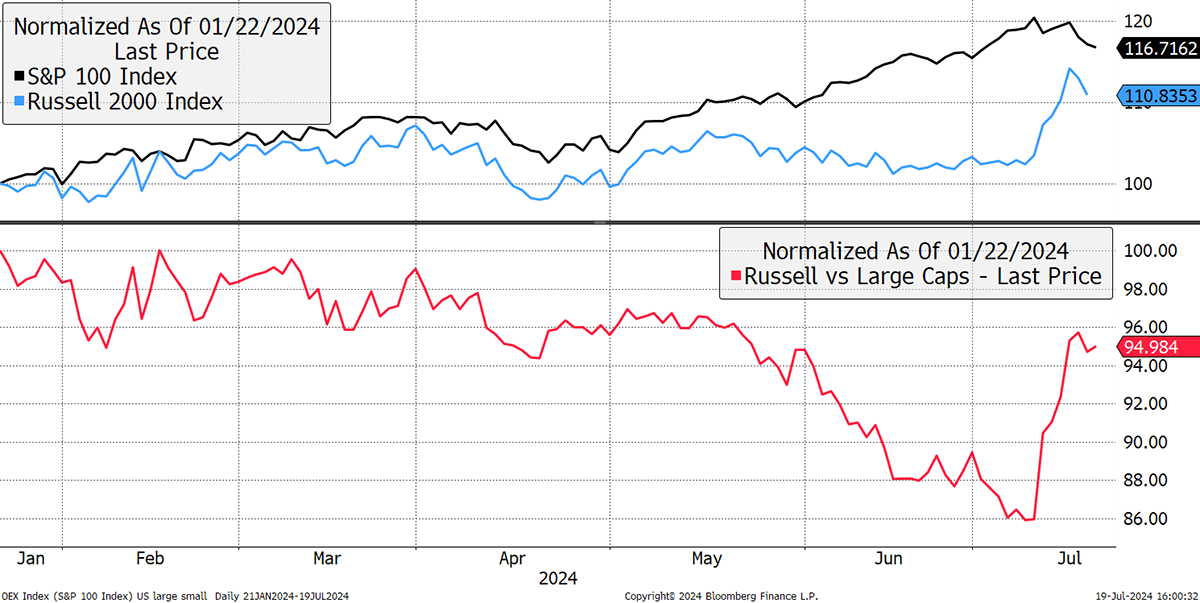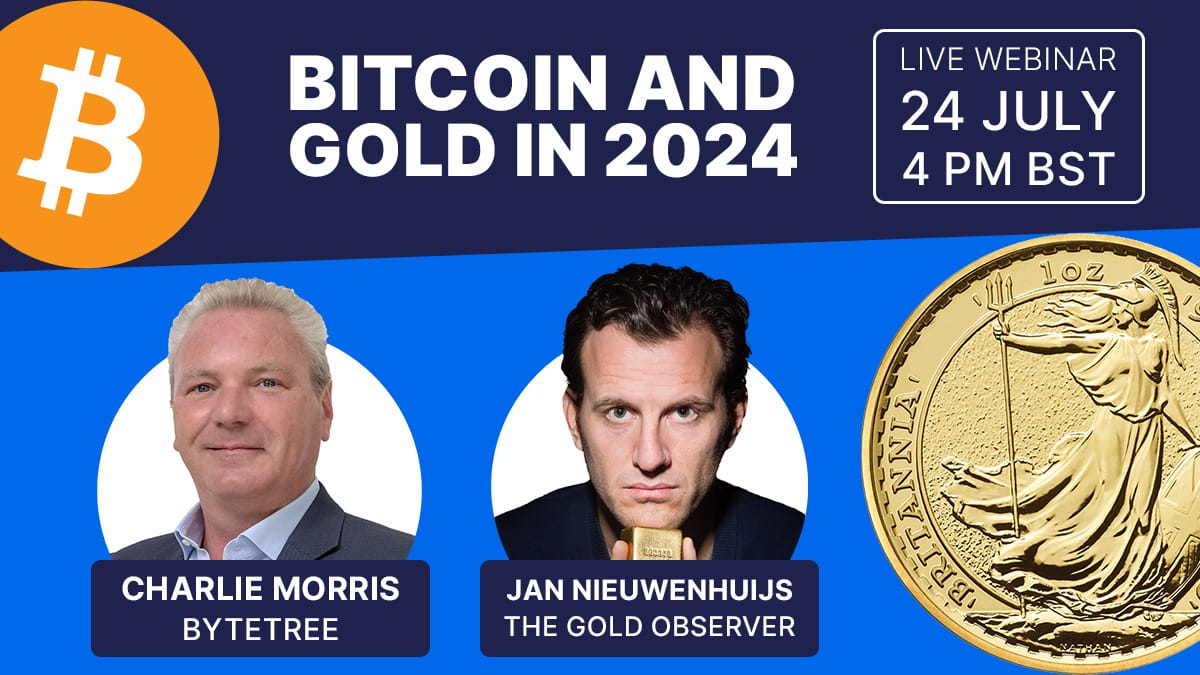The Zulu Principle by the late Jim Slater was one of the first investment books I ever read, and it got me hooked. He embraced screening stocks for attractive features such as growth, value, relative strength, profitability, cash flow, and more. It was very readable. I have probably read 200 or more investment books since, but it’s one of the few I can vividly remember.
His point about elephants was that they were large, slow-moving beasts. Having died in 2015, he neither lived in the era of hugely profitable, giant internet companies nor, presumably, had he been chased by an elephant. I’ve experienced both, although, to be fair, the elephants weren’t that close. That took place in Kenya in 1995 while walking from Nanuki to Loiyangalani with 11 soldiers and 14 camels. We had no vehicles nor anywhere to hide, so 200 or 300 meters felt up close and personal.
His point was that if you wanted growth, invest in smaller companies because they are nimble and if their business model is good enough, they are just getting started. In contrast, the large, established companies are sluggish, and will naturally grow at a slower pace. Smaller companies are also less liquid, which keeps many investors at bay. The result is that smaller companies normally trade at a discount to larger companies, as liquidity commands a premium.
Higher growth combined with lower prices means excess returns. Financial academia agrees and even put a name on it. Being such a creative bunch, they came up with the “size effect.” Yet over 45 years, the returns have been about the same, at least in capital terms. This is an unnatural state of affairs, and it is only true because the big tech companies kept on growing after they became big. In terms of economic history, this is very rare indeed.
The Russell 2000 Small Cap Index vs the S&P 100 Mega Cap Index

It won’t last, not least because these big tech companies grew quickly because the internet enabled them to. What would normally take many decades has been accelerated, enabled by the virtual world. Perhaps it has happened all too quickly.
Then last week, the mega caps rolled over, while the Russell surged. The market bores reported that it was the largest and quickest shift in the size effect in history. It is telling us that something big is coming. It doesn’t take much switching out of the mega caps to refloat small caps, but the rest of the world has also been left behind following this extraordinary decade of US large cap dominance.
Historical Move for the Size Effect

A Week at ByteTree
Value is coming, and I wrote about that in The Multi-Asset Investor on Tuesday, looking at Estee Lauder as a case study.
That was followed by Atlas Pulse, my monthly gold note, which looked at the gold miners. It inspired me to choose a gold miner to recommend in Venture, which I did, and that update was published earlier today. The metrics stood out. It’s not often you see a mid-cap gold miner with growth in production, a strong balance sheet, and a low valuation that pays a decent dividend yield.
Finally, on Planet Crypto, ByteFolio was commenting on the Trump victory alongside crypto evangelist JD Vance.
What do you mean the election isn’t until November?
Webinar

Remember to sign up for my webinar next week with Jan Nieuwenhuijs. We shall be discussing the gold market, the new all-time high, and naturally, BOLD will get a mention too. There will also be a Q&A at the end, so make sure to think of lots of questions.
Wednesday 24 July 2024 at 16:00 BST (11:00 ET, 17:00 CET)
Do share this with anyone in your network who might also be interested in attending.
See you there, and have a great weekend,
Charlie Morris
Founder, ByteTree







